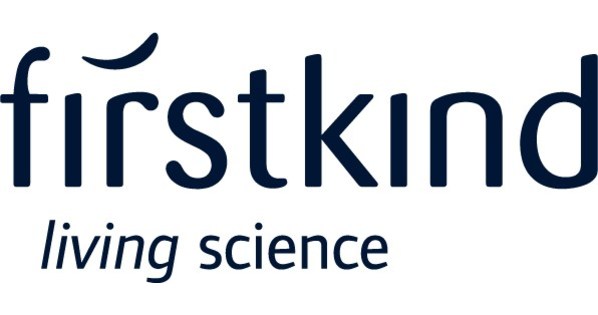Embracing innovation to drive clinical change in UK stroke care

Medical technology (MedTech) companies go through a vigorous process to introduce their solutions into a clinical environment. Unlike other tech businesses, which tend to be fast moving and regularly evolving, innovations in the medical environment take longer to break through and have greater hurdles to navigate. There is more at stake and a higher risk associated with MedTech adoption but, when successful, the rewards can be life changing for patients.
In this article, Dr Indira Natarajan, Clinical Director for Neurosciences and Stroke at the University Hospital of North Midlands, discusses the processes and considerations of adopting new technologies, his journey of embracing innovation to drive positive patient outcomes in the hospital’s stroke unit, and some of the challenges the health system faces when implementing these solutions into care pathways.
Understanding the patient journey
The University Hospital of North Midlands is home to one of the UK’s most comprehensive stroke units. Treating around 1,500 stroke patients a year and catering for a population of around three million people in the area, Dr Natarajan and his team offer a broad scope of treatments across a dedicated 32-bed stroke unit. It is a tertiary neuroscience referral for patients across Staffordshire and Shropshire, with the unit helping patients from New Cross Hospital in Wolverhampton, Telford and Shrewsbury Hospital, County Hospital at Stafford, and Leighton-Mid Cheshire Hospital.
Dr Natarajan treats patients with mild to disabling strokes and is responsible for ensuring the best care is delivered throughout the process, touching on various areas of that care.
“A patient’s journey starts from the point they are picked up by a paramedic and continues through to when they return home, where their treatment is followed up in the community,” comments Dr Natarajan. “Our role is to ensure that we deliver the best care possible, and technology plays an important role - it can save valuable time, enhance patient monitoring, and improve overall accessibility.”
Time-saving technology
Having experienced firsthand the benefits of increased technology rollout for streamlining care services, Dr Natarajan explains how this helps healthcare professionals with diagnosis and decision making, which is crucial when emergency care is required, and clinicians must work against the clock.
“We work in line with the concept of ‘time is brain’ or ‘the golden hour’,” he says. “Care delivered within 60 minutes of the onset of stroke symptoms in most cases will improve patient outcomes, so we need to make important clinical decisions quickly.”
“Technology has already enabled us to streamline the patient journey, helping to save more lives. When I joined as a stroke consultant in 2008, I had to drive to the hospital to look at CT scans and give patients the necessary clot busting drugs myself,” he continues. “Now, with evolving artificial intelligence (AI) that can help us interpret CT brain scans, CT angiograms, and CT perfusion scans, all I need is my phone. I receive the images within five minutes and can analyse these with the help of AI, from anywhere. I then consult with a stroke nurse who is with the patient, and we decide on the necessary next steps. This is just one example of how significantly technology can support clinical decision making to save valuable time.”
The considerations of tech adoption
Clinicians are responsible for the welfare of patients and have a responsibility to introduce solutions that will improve health outcomes. For a new technology to be adopted in the NHS, it should either provide a better alternative to existing treatments or fill a gap where treatment may not be accessible, suitable, or available for all patients - known as an ‘unmet need’. And clinicians need evidence that technology is safe and effective.
“Our most important consideration is that any new treatments we introduce do not put patients at risk of further complications or cause any unsafe side effects,” notes Dr Natarajan. “We then need proof that a solution offers the same or improved efficacy as existing treatments that are available or it addresses an unmet need. If it does not improve health outcomes or enhance the patient journey, it is not worth our time.”
However, demonstrating the benefits of MedTech can be challenging - particularly in comparison to pharmaceuticals. Historically, most medical interventions were in the form of medicine, injected or ingested. The patient would recover or heal, with possible side effects throughout the course of treatment.
“If we are injecting a drug or giving a tablet, we know that it has been consumed by the patient,” explains Dr Natarajan. “With tech, particularly wearable tech, it can be applied to the patient, but it may not always be worn or administered correctly. It might fall out of place, or the patient could feel uncomfortable and move or remove it. In this sense, technology requires more upkeep and monitoring.”
Identifying an unmet need
A priority for Dr Natarajan and his team is ensuring that no further complications arise once they are in the hospital’s care.
“A common complication among stroke patients is the development of blood clots (known as venous thromboembolism or ‘VTE’),” he explains. “They are at a particularly high risk, as patients often remain immobile while they are recovering, slowing down blood flow and increasing the risk of clotting. VTE prevention for acute stroke patients requires a range of interventions, as there is no one-size-fits-all solution available.”
Pharmaceutical intervention – specifically, blood thinning medication - would typically be prescribed for VTE prevention, but it is not the recommended routine for acute stroke patients, as it increases the risk of bleeding inside the brain. Instead, stroke patients are prescribed intermittent pneumatic compression (IPC) to promote blood flow around the body. IPC consists of big compression sleeves worn on both legs that inflate and squeeze the legs every 20 to 60 seconds to enhance blood flow.
“Despite being evidence-based and a recommended treatment, some patients cannot tolerate, or have contraindications to IPC,” states Dr Natarajan. “Patients often remove the IPC overnight, as it causes discomfort and sleep disruption, but this leaves them without any preventative measure against blood clots. To deliver the best care possible, we needed a solution that would ensure treatment is available and suitable for everyone.”
Championing clinical innovation
A notable innovation adopted by Dr Natarajan and his team is Sky Medical Technology’s geko device - a small, non-invasive neuromuscular electrostimulation device that is applied to the surface of the skin just below the knee. The wearable delivers a gentle electrical pulse, once per second to the common peroneal nerve, activating the calf and foot muscle pumps, resulting in increased blood in the deep veins of the calf at a rate equal to 60% of walking - effectively replicating the effects of exercise without a patient needing to move. The enhanced blood flow offers a range of benefits, including the prevention of blood clots.
“The geko device had a role in our patient journey, as we felt there was an unmet need in a population group that the device served,” comments Dr Natarajan. “I always believe in real-world data, and the best way to prove that a product works is in its intended setting. When the team at Sky Medical Technology approached us with the geko device in 2017, I proposed we move forward with an observational study for 1,000 patients to explore the device’s benefits. We wanted to ensure that it would be well tolerated, particularly when patients sleep, and see whether it could be used on those unsuitable for pharmaceutical intervention or IPC.”
The observational study found that around 30% of patients could not be treated with IPC. This meant that for around a third of the patients there was no safe anti-VTE treatment, leaving them at risk of developing blood clots. The team then explored geko compliance compared to IPC and measured VTE events at 90 days post-stroke.
“We were pleasantly surprised by the results - >90% of patients tolerated the device and there were zero incidences of VTE reported 90 days post-discharge, compared to 2.4% of patients who were treated with IPC,” says Dr Natarajan. “This ultimately led to the geko device being adopted into our unit.”
“A telling sign that the geko device is active is that it elicits a twitch of the leg once every second - reassuring both us and the patient that it is working,” he explains. “Its safety profile was excellent and, when we collected patient feedback, the majority of patients forgot that they had the device on. Compared to IPC, which squeezes and compresses the legs, the geko device was found to be more comfortable and noiseless, allowing patients to sleep much better.”
Since then, the geko device has been adopted in other stroke units across the country, where clinicians have also identified the same unmet need. Following the results of the real-world data, Dr Natarajan and his team are conducting a head-to head randomised control trial (RCT), where they will investigate the geko device’s efficacy directly compared to IPC for blood clot prevention in stroke patients.
Continuing the momentum of change
Crisis is often the catalyst of change, and it forces systems to move more quickly than they would otherwise.
“COVID made the NHS look at how care is delivered in a new light,” claims Dr Natarajan. “In the past, we believed that patients should be seen face-to-face in a hospital clinic, but the pandemic completely shifted this way of thinking. The necessary implementation of remote healthcare delivery made the system realise that such methods can be effective and large-scale changes can be implemented quickly and successfully.”
“Telemedicine has completely revolutionised health consultations: where patients previously required travel arrangements, parking spaces, or time off work, patients can now receive consultations in their homes, surrounded by family and friends,” he says. “We can get all information from a virtual consultation and then bring the patient in for testing. The process is seamless, and the patient experience is much better.”
Healthcare services have been cautious with adopting new solutions to prioritise patient safety, but the benefits of moving quickly have become more widely recognised since the pandemic. Another instance of successful innovation adoption that Dr Natarajan shares is an irregular heart rate monitor. His unit previously used a 24-hour tape and 48-hour Holter monitor – a portable ECG that records the heart’s electrical activity for a certain period while patients are away from their healthcare provider.
“When I looked at the yield of picking up a heart rhythm condition called atrial fibrillation – one of the biggest causes of ischaemic stroke – the yield was only around 1%,” explains Dr Natarajan. “Then, I came across a trial that was measuring the performance of a loop recorder that goes under the patient’s breastbone for prolonged monitoring and the pickup rate of atrial fibrillation was 30% - a huge improvement. Similarly to the geko device, I suggested we conduct a pilot on patients who were at high risk of having atrial fibrillation and see what the evidence shows. Now, it is in regular use and has completely changed our practice.”
A network of like-minded clinicians are leading change in the healthcare sector. But, as Dr Natarajan notes, it can take time to spread the word.
“Once we have demonstrated that a solution works, it is usually down to us to educate others,” he says. “We will present our findings at various national and international conferences, attend events, get published in journals; then, word begins to spread. If we want a solution rolled out across the UK, we need an RCT. Unfortunately, this takes time, but we are hoping that the momentum from COVID will continue and help speed up the process of adoption moving forward.”
Leadership, consistency, and passion
The system may be shifting, but there is still a long way to go, particularly with ensuring consistency across the NHS. Dr Natarajan concluded that “technology is not cross infiltrating (replicating), so what is available in one area in the same organisation is not extrapolated to others. This means that one stroke unit can provide better care than another, but this should not be the case. There needs to be a common link - a digital or innovation lead in the organisation to help extend the reach of new solutions and ensure all patients have access to life saving care.
“When you dig deep into the issue, it is simple,” concludes Dr Natarajan. “The best units have leadership and passion; it is far more than just providing a service. The more clinicians who are eager to champion innovation, the more widespread innovation will become in healthcare, ultimately transforming how the NHS operates and, above all, improving patient outcomes”.
About Firstkind and Sky Medical Technology Ltd

Sky Medical Technology, the parent of Firstkind Ltd, is a UK-based medical devices company. Through its innovative mechanism of neuromuscular electrostimulation, Sky has developed a non-invasive, ground-breaking technology platform, OnPulse, embedded in its industry-leading brand, the geko device. Sky’s products are tailored to different medical application areas, selling through strategic partnerships or distributors in each major clinical area. Clinical areas of focus include life threatening blood clots, complications related to swelling after orthopaedic surgery and vascular conditions related to wound healing. The goal in each pathway is to partner with healthcare professionals to improve clinical outcomes and patient care whilst saving health system resources. www.skymedtech.com












